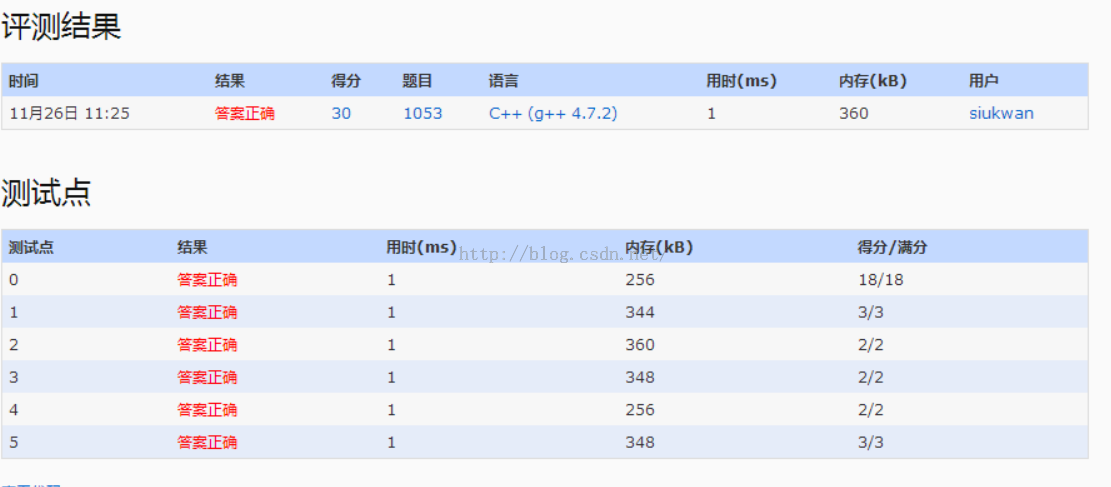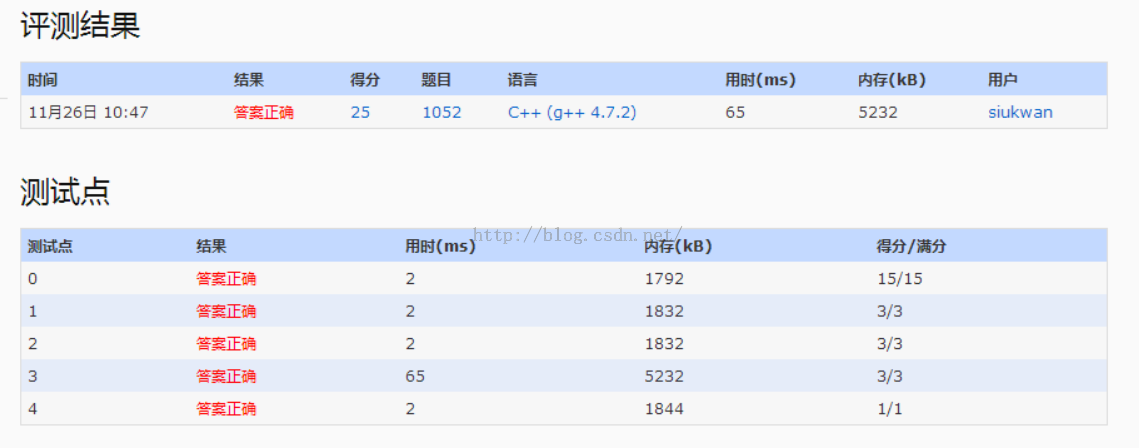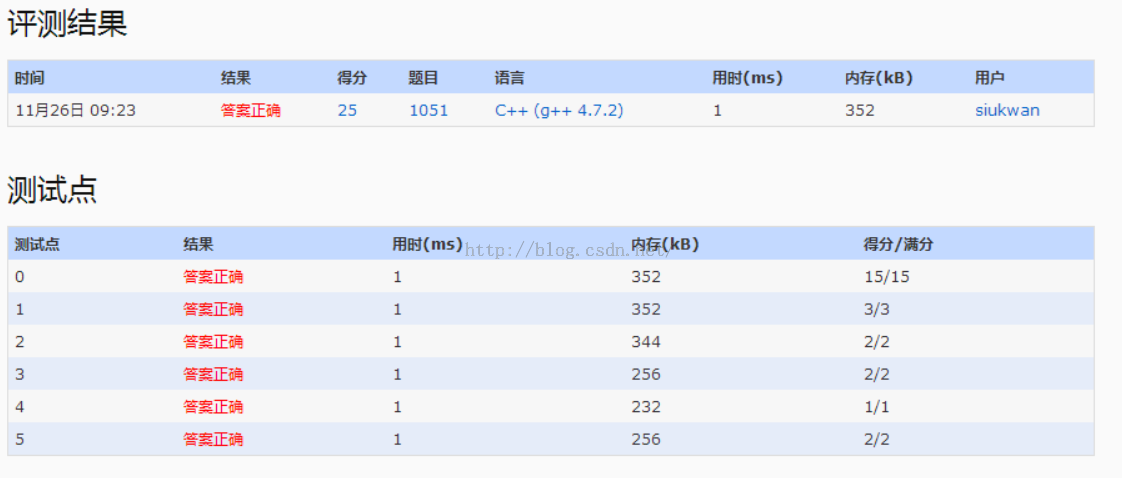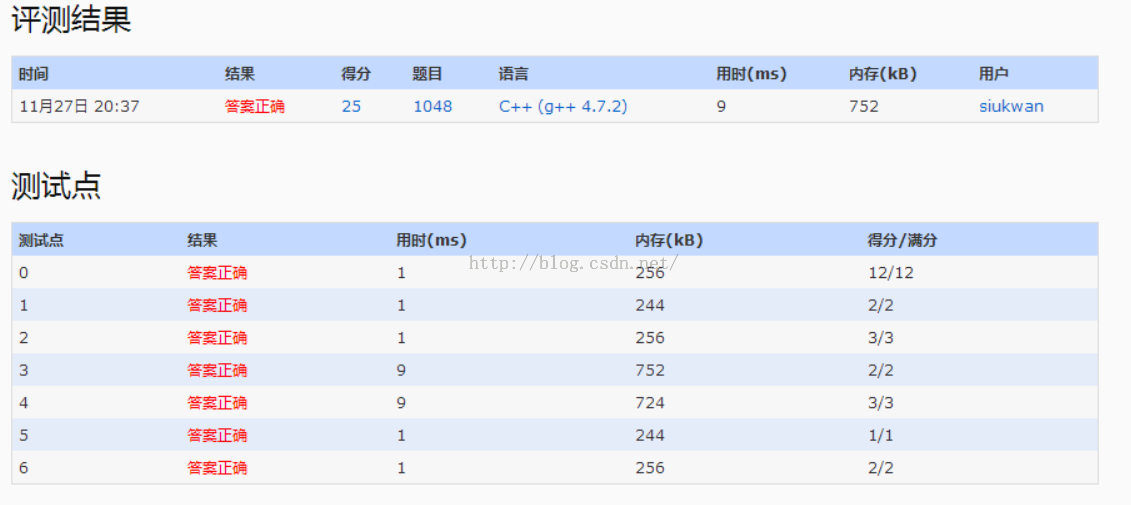1.题目给出一棵和一个权重值W,要求求出从根到叶子节点权重累加为W的路径。
2.该题使用树节点数据结构,其中包含vector<int> child列表和权重值。
3.使用DFS进行遍历搜索(节点最多100个),能够满足要求。
Given a non-empty tree with root R, and with weight Wi assigned to each tree node Ti. The weight of a path from R to L is defined to be the sum of the weights of all the nodes along the path from R to any leaf node L.
Now given any weighted tree, you are supposed to find all the paths with their weights equal to a given number. For example, let’s consider the tree showed in Figure 1: for each node, the upper number is the node ID which is a two-digit number, and the lower number is the weight of that node. Suppose that the given number is 24, then there exists 4 different paths which have the same given weight: {10 5 2 7}, {10 4 10}, {10 3 3 6 2} and {10 3 3 6 2}, which correspond to the red edges in Figure 1.
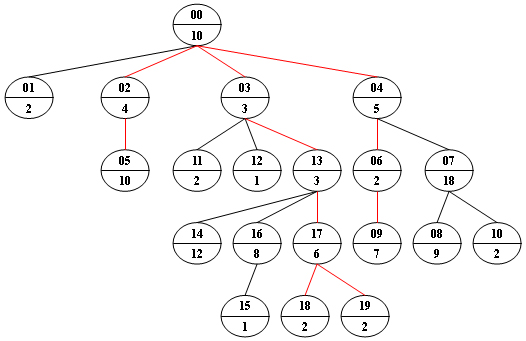
Figure 1
Each input file contains one test case. Each case starts with a line containing 0 < N <= 100, the number of nodes in a tree, M (< N), the number of non-leaf nodes, and 0 < S < 230, the given weight number. The next line contains N positive numbers where Wi (<1000) corresponds to the tree node Ti. Then M lines follow, each in the format:
ID K ID[1] ID[2] ... ID[K]
where ID is a two-digit number representing a given non-leaf node, K is the number of its children, followed by a sequence of two-digit ID’s of its children. For the sake of simplicity, let us fix the root ID to be 00.
Output Specification:
For each test case, print all the paths with weight S in non-increasing order. Each path occupies a line with printed weights from the root to the leaf in order. All the numbers must be separated by a space with no extra space at the end of the line.
Note: sequence {A1, A2, …, An} is said to be greater than sequence {B1, B2, …, Bm} if there exists 1 <= k < min{n, m} such that Ai = Bifor i=1, … k, and Ak+1 > Bk+1.
Sample Input:
20 9 24 10 2 4 3 5 10 2 18 9 7 2 2 1 3 12 1 8 6 2 2 00 4 01 02 03 04 02 1 05 04 2 06 07 03 3 11 12 13 06 1 09 07 2 08 10 16 1 15 13 3 14 16 17 17 2 18 19
Sample Output:
10 5 2 7 10 4 10 10 3 3 6 2 10 3 3 6 2
AC代码:
[c language=”++”]
//#include<string>
//#include<stack>
//#include<unordered_set>
//#include <sstream>
//#include "func.h"
//#include <list>
#include <iomanip>
#include<unordered_map>
#include<set>
#include<queue>
#include<map>
#include<vector>
#include <algorithm>
#include<stdio.h>
#include<iostream>
#include<string>
#include<memory.h>
#include<limits.h>
#include<stack>
using namespace std;
struct TreeNode{
vector<int> child;
int w;
TreeNode() :child(0), w(0){};
};
void dfs(int now, int target, vector<TreeNode>&tree, vector<int>&path, vector<vector<int>>&ans)
{
if (tree[now].child.size() == 0 && target == 0)
ans.push_back(path);//叶子节点,并且满足要求
if (tree[now].child.size() != 0 && target <= 0)
return;//
else if (target < 0)
return;
for (int i = 0; i < tree[now].child.size(); i++)
{
path.push_back(tree[tree[now].child[i]].w);
dfs(tree[now].child[i], target – tree[tree[now].child[i]].w, tree, path, ans);
path.pop_back();
}
}
bool cmp(const vector<int>&a, const vector<int>&b)
{
for (int i = 0; i < min(a.size(), b.size()); i++)
{
if (a[i] >b[i])
return true;
else if (a[i] < b[i])
return false;
}
return false;
}
int main(void)
{
int nodeSum, nonLeafSum, target;
cin >> nodeSum >> nonLeafSum >> target;
vector<TreeNode> tree(nodeSum);
for (int i = 0; i < nodeSum; i++)
{
scanf("%d", &tree[i].w);
}
for (int i = 0; i < nonLeafSum; i++)
{
int nodeNum=0;
scanf("%d", &nodeNum);
int childSum = 0;
scanf("%d", &childSum);
tree[nodeNum].child = vector<int>(childSum);
for (int j = 0; j < childSum; j++)
{
scanf("%d", &tree[nodeNum].child[j]);
}
}
if (nodeSum > 0)
{
vector<int> path;
vector<vector<int>> ans;
path.push_back(tree[0].w);//注意判断根节点是否存在
target -= tree[0].w;
dfs(0, target, tree, path, ans);
sort(ans.begin(), ans.end(), cmp);
for (int i = 0; i < ans.size(); i++)
{
for (int j = 0; j < ans[i].size(); j++)
{
printf("%d", ans[i][j]);
if (j != ans[i].size() – 1)
printf(" ");
}
printf("\n");
}
}
return 0;
}
[/c]
